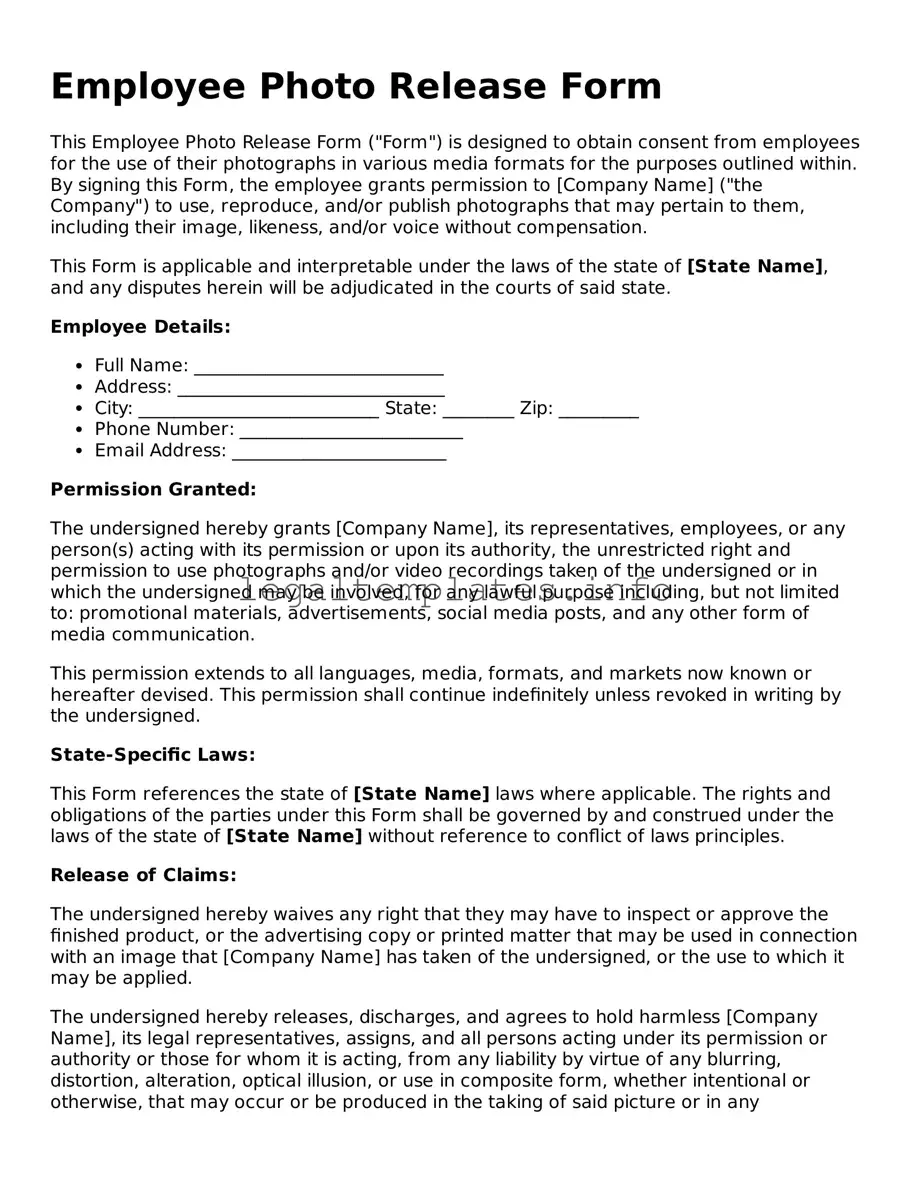Employee Photo Release Form
This Employee Photo Release Form ("Form") is designed to obtain consent from employees for the use of their photographs in various media formats for the purposes outlined within. By signing this Form, the employee grants permission to [Company Name] ("the Company") to use, reproduce, and/or publish photographs that may pertain to them, including their image, likeness, and/or voice without compensation.
This Form is applicable and interpretable under the laws of the state of [State Name], and any disputes herein will be adjudicated in the courts of said state.
Employee Details:
- Full Name: ____________________________
- Address: ______________________________
- City: ___________________________ State: ________ Zip: _________
- Phone Number: _________________________
- Email Address: ________________________
Permission Granted:
The undersigned hereby grants [Company Name], its representatives, employees, or any person(s) acting with its permission or upon its authority, the unrestricted right and permission to use photographs and/or video recordings taken of the undersigned or in which the undersigned may be involved, for any lawful purpose including, but not limited to: promotional materials, advertisements, social media posts, and any other form of media communication.
This permission extends to all languages, media, formats, and markets now known or hereafter devised. This permission shall continue indefinitely unless revoked in writing by the undersigned.
State-Specific Laws:
This Form references the state of [State Name] laws where applicable. The rights and obligations of the parties under this Form shall be governed by and construed under the laws of the state of [State Name] without reference to conflict of laws principles.
Release of Claims:
The undersigned hereby waives any right that they may have to inspect or approve the finished product, or the advertising copy or printed matter that may be used in connection with an image that [Company Name] has taken of the undersigned, or the use to which it may be applied.
The undersigned hereby releases, discharges, and agrees to hold harmless [Company Name], its legal representatives, assigns, and all persons acting under its permission or authority or those for whom it is acting, from any liability by virtue of any blurring, distortion, alteration, optical illusion, or use in composite form, whether intentional or otherwise, that may occur or be produced in the taking of said picture or in any subsequent processing thereof, as well as any publication thereof, including without limitation any claims for libel or invasion of privacy.
Acknowledgment:
By signing below, the undersigned acknowledges and agrees that they have fully read and understood this Employee Photo Release Form and agree to all its terms and conditions.
Date: _________________
Employee Signature: ________________________
Printed Name: _____________________________
